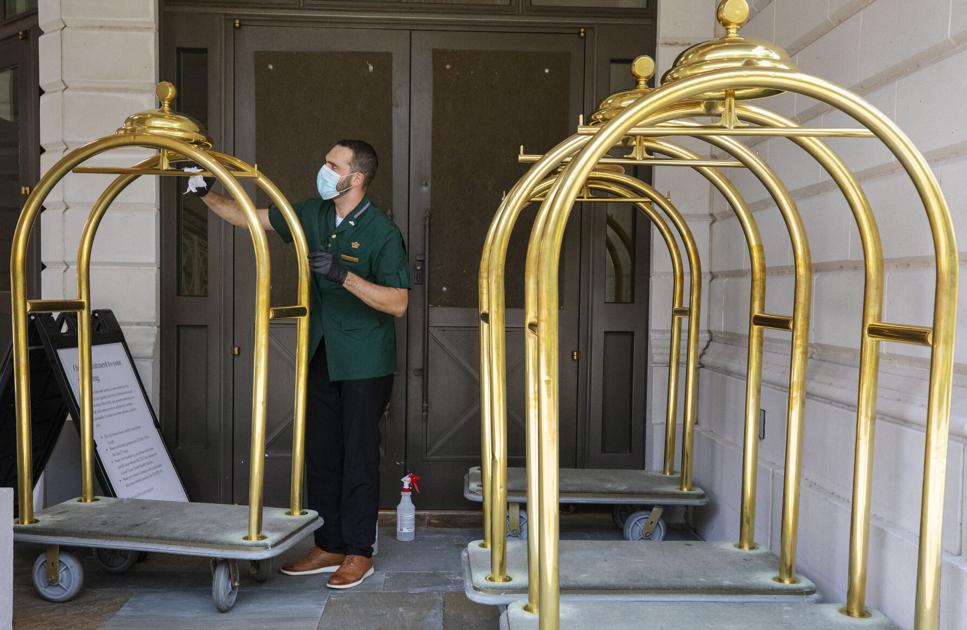South Carolina lost about 3,646 seasonally adjusted jobs last month as the coronavirus pandemic increased and the state continued to work to get out of an economic hole.
The seasonally adjusted fall in employment in December, which represents annual fluctuations, marks the second consecutive month in which South Carolina is said to have cut jobs.
This is not a good sign, especially with the state still losing more than 100,000 seasonally adjusted jobs that existed before the new coronavirus was first detected in March last year.

The state’s unemployment rate, which Governor Henry McMaster recently praised in his state speech, rose from 4.4% in November to 4.6% in December.
It is still lower than the national unemployment rate, which fluctuates around 6.7%.
Matthew Martin, an economist and regional executive at the Federal Reserve Bank of Richmond, said the state’s economy in general did better than other parts of the country last year with the pandemic.
But the relatively low rate of unemployment in South Carolina at the moment can be somewhat misleading.
It is true that South Carolina’s unemployment rate has improved dramatically since last April, when it rose 12.8% during the first outbreak of coronavirus cases. But the drop since then was not just the result of the state adding jobs to the economy. A significant part of it is influenced by the abandonment of the labor market.
In the past six months, South Carolina has seen large numbers of people leave the state’s active workforce.
Data from the US Bureau of Labor and Statistics suggest that about 118,000 fewer people were participating in the state’s workforce in December compared to July. This means that these people are no longer actively looking for jobs and, as a result, do not count towards the state’s unemployment rate.
If you add these people back to the workforce, the state’s unemployment rate will be around 9%.

People can leave the workforce for a variety of reasons, especially during difficult economic times.
Some parents are taking care of their children during virtual learning and therefore are not looking for a job. Some people may have retired earlier as a result of the current crisis. People who care for elderly family members may not want to work in jobs where they are at risk of contracting the virus. And others may be so frustrated with their job prospects that they have given up looking for work.
South Carolina may need these people to return to the workforce if the state’s economy wants to recover to pre-pandemic levels.
“It is an open question when these people can return to the job market,” said Martin, the federal reserve economist.
Dan Ellzey, the Executive Director of the SC Department of Employment and Workforce, attributed the jobs report in December to the uncertainty that loomed at the end of last year, while Congress debated whether to approve another federal stimulus package.
Federal lawmakers ended up approving a $ 900 billion spending account to increase unemployment benefits, disburse another round of loans to small businesses and finance direct stimulus payments to millions of Americans.

Ellzey encouraged people who are now unemployed to use his agency to find new jobs, and he noted that there are currently 75,000 vacancies advertised on the DEW website.
The problem in the past few months, however, has been combining available jobs with the education, training and qualification sets of remaining unemployed workers in South Carolina.
The jobs report released on Tuesday shows that many of the jobs lost last year were in sectors that do not always require employees to have advanced degrees or specialized training.
Martin said that job losses have been “heavily concentrated in lower-paid sectors,” and when these people look for a new job, it’s not as simple as sending an order to another company.
The state’s restaurants, hotels and other companies in the leisure and hospitality sector, for example, employed 43,500 fewer people in late 2020 than in the previous year. It is not clear how quickly these types of jobs will return with the rapid spread of coronavirus still influencing people’s decisions to travel, dine at home and pay for holidays.
South Carolina still had an average of more than 3,000 new confirmed cases of coronavirus a week this month, as state health officials rushed to administer the new vaccines available and companies pressured the governor for their employees to be inoculated as soon as possible. fast as possible.
Sectors such as construction, manufacturing and financial services registered slight job increases in December, year after year, but it is not always easy for hotel cooks and receptionists to get into available jobs, said Martin.
“There is an element of retraining here. It is a short-term struggle to get people from one sector to another,” said Martin. “I think we will see this type of friction for some time.”
Reach Andrew Brown at 843-708-1830 or follow him on Twitter @andy_ed_brown.
